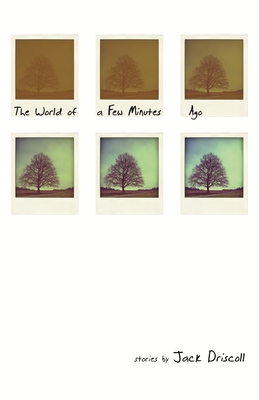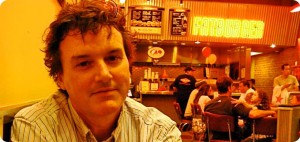 Mark McGurl received his PhD in Comparative Literature from Johns Hopkins University. His first book, The Novel Art: Elevations of American Fiction after Henry James, was published in 2001 by Princeton University Press. Louis Menand (in a New Yorker review) called McGurl’s most recent book, The Program Era: Postwar Fiction and the Rise of Creative Writing, “impressive and imaginative.” McGurl, a professor of English at UCLA, is a literary scholar who actually likes writers. More amazingly, he likes MFA programs. In The Program Era, published by Harvard University Press, McGurl argues that the rise of the MFA program in the twentieth century made a uniquely significant contribution to the excellence of postwar American literature. Through profiles of writers as different as Flannery O’Connor and Ken Kesey, McGurl makes the case that the great works of the twentieth century were produced not in spite of the institutionalization of creative writing, but to a large extent because of it.
Mark McGurl received his PhD in Comparative Literature from Johns Hopkins University. His first book, The Novel Art: Elevations of American Fiction after Henry James, was published in 2001 by Princeton University Press. Louis Menand (in a New Yorker review) called McGurl’s most recent book, The Program Era: Postwar Fiction and the Rise of Creative Writing, “impressive and imaginative.” McGurl, a professor of English at UCLA, is a literary scholar who actually likes writers. More amazingly, he likes MFA programs. In The Program Era, published by Harvard University Press, McGurl argues that the rise of the MFA program in the twentieth century made a uniquely significant contribution to the excellence of postwar American literature. Through profiles of writers as different as Flannery O’Connor and Ken Kesey, McGurl makes the case that the great works of the twentieth century were produced not in spite of the institutionalization of creative writing, but to a large extent because of it.
During McGurl’s September visit to Washington University in St. Louis, Mary Stewart Atwell sat down with the author to discuss the place of creative writing within the English department, why Hemingway could not have been a professor, and what Henry James would have thought of MFA programs.
Interview
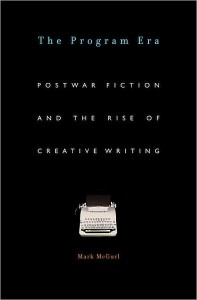 MARY STEWART ATWELL: For readers who haven’t read the book, could you talk broadly about how and why you decided on this project?
MARY STEWART ATWELL: For readers who haven’t read the book, could you talk broadly about how and why you decided on this project?
MARK MCGURL: Sure. My first book is on early twentieth century American writers and—to put it simply—their relation to the market. And as I was finishing it up, I just kept thinking about how one option that Faulkner, for instance, didn’t have was teaching creative writing. He went out to Hollywood to make some money; he didn’t really have the option of being a creative writing teacher. Then it occurred to me what a shockingly large-scale change that was in literary history. It was the rise of this new form of, well, “patronage” isn’t an exact term for it, but an institutional space where writers can now be found. And then I went and looked for the book on that topic and didn’t find it, so I thought I’d do it myself.
That’s always a good moment.
It was. Though there were a few things that were helpful, thankfully, so I didn’t have to do everything myself. But I had the idea of actually looking at the creative writing program, and asking in what ways has it mattered to postwar literature that writers have had an increasingly intimate relation to the university.
You did your doctorate at Johns Hopkins, which has an excellent graduate program in creative writing. Did you interact with those writers when you were a student?
A little bit, but only incidentally. Unlike certain places where there’s a long tradition of interweaving creative and critical practice, Hopkins is a place where the people on the English literature side of things are very distinctively not creative writers. When I was there, literary study was almost predicated on not taking the author’s point of view. We were looking at literature from historical perspectives, where often enough a writer might not know what he or she is doing, or how he or she is being conditioned by historical forces. So when creative writers would end up in class, it was always an interesting moment—and not always the most comfortable one, I have to say. You have a teacher and graduate students who are looking at literature in a certain way, and then there would be people from the creative writing program who, in general, had a quite different orientation toward literature. Hopkins is a sort of extreme example of physical proximity between the creative writers and the critics, but with very little overlap in their daily business.
I wonder if that discomfort has something to do with the length of the institutionalized apprenticeship in literary studies as opposed to creative writing. The academic path is such an elaborate and structured one, whereas creative writing seems to pride itself on not being formalized to the same extent.
I think that’s true. Your typical PhD in literature spends six or seven years, sometimes eight, taking classes, and then completing their exams, and then writing the dissertation and defending it. And the timeframe of your typical MA or MFA program is much, much shorter. Of course the PhD in creative writing, which is the newest thing, begins to change that difference a little bit. But for the moment, by and large, they’re very different career paths, and that difference continues even into the level of the faculty. Creative writing faculty and scholarly faculty begin to confront questions like, “How much should one have published, and what kind of things should one have published, to earn tenure?” I don’t have really good answers to these questions. It throws the usual standards for measurement of accomplishment out of whack, because nobody knows how to judge a chapbook or a book of poems or a novel in relation to a scholarly work. It’s an interesting dilemma for a lot of departments.
Reading reviews of your book, I only found one where the reviewer identified herself as a fiction writer. But I know that it’s been of tremendous interest to writers. I was wondering what kind of responses you’ve gotten from writer friends or writers in the audience when you give a talk.
Now that the book is out, it’s starting to get some attention from writers. In the years that I was working on it, it was interesting and to some degree a little bit disappointing to me how little attention it received from creative writers. For a while I thought, “OK, I’m writing this book on creative writing and no creative writers are going to be interested in it at all.” That’s turning out not to be the case, and I’m very happy about that. It’s definitely a scholarly book—there are diagrams, after all—but I definitely was hoping to start lots of conversations about the relation between scholarship and creative writing. The short answer is that it’s just now that I’m realizing creative writers are reading the book in substantial numbers–and that’s probably because of how the traffic patterns of this profession work. I’ve never presented work at AWP; I’ve always been at the MLA, so I’ve been interacting with scholars, not writers, along the way. Now that the book is out, the audience is transforming, which is nice.
To extend this subject, maybe we can talk about the response to your work that Eileen Pollack published in American Literary History. She’s a fiction writer publishing, in this case, in a journal with a historical focus, which seems to reaffirm some of your points about the breakdown, as creative writing is institutionalized, of divisions between scholarship and creativity.
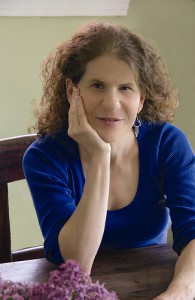
Eileen Pollack
And I would say that that was a very productive exchange, at least from my perspective. We came at Flannery O’Connor from very different positions, but she really knows her stuff. She gave her own alternative readings, which I found in many cases very persuasive. So even though she was critically responding to my article, in a sense defending Flannery O’Connor from my sarcasm—
From your attack—
Well, I didn’t exactly attack Flannery O’Connor, but I was certainly giving a reading that O’Connor wouldn’t have given of herself. My emphasis was on the way that her stories encode what is almost an erotics of discipline—she certainly wouldn’t have fessed up to that, I don’t think. And Pollack came in and reoriented it toward what O’Connor herself would have said about what she was trying to do. But I thought that that exchange was high-quality. I’m proud of my article, and I thought that her response was very intelligent. So that was a hopeful moment for me. It was a good example of a meeting between a scholar and a creative writer who is able to respond to the scholar from the point of view of the writer.
Your reviewers, both critical and creative, seemed surprised that you’re not trying to tear down the institution of the creative writing program—that you’re actually very complimentary about the effect of the program on postwar literature. Why do you think that is?
Yeah, why is that? One of the interesting things about the creative writing program is that it’s sort of schizophrenic. On the one hand, we’ve gone from zero to 350-something programs in this country in a seventy year span, so clearly they serve some important purpose, and people like them, or they wouldn’t be multiplying the way they are. But then on the other hand, it’s been the easiest thing in the world to insult them. The prejudices against institutionalizing creativity are so profound. The essentially romantic myths of the artist as above all an individual voice go so deep that the default feeling about creative writing programs—certainly from outsiders, but even to a certain degree from insiders—is to loathe them. People are embarrassed by the whole spectacle of institutionalizing creativity, and taking something that would be a romantic, mysterious, deep enterprise and putting it in school. It seems to make it much less sexy. Those biases are deeply embedded, so when people hear about a scholar who has written a big book on creative writing, the instantaneous assumption is that of course I’m going to be trying to bury creative writing once and for all so I can get rid of these creative writers who irritate me at faculty meetings. To me, that approach—tearing down creative writing—never seemed like an interesting way to go. But it’s not that I would reject every critique of the creative writing program. The book’s not a celebration of it either—there’s lots of airing of all of the discomforts around the idea of institutionalizing literature. But it seemed to me that it was important not to begin with the predictable criticism of creative writing programs as making writers predictable.
I thought that was very refreshing, and it made me want to ask you about a remark you made in another interview—that, unlike some of the writers you discuss, you “love institutions.” As more and more program graduates are hired as creative writing instructors, I imagine that more and more of them will feel at home in institutions, and happy to have health insurance. How will that change the model of the creative writing teacher as the outside within the inside?
I think that’s a really interesting question. In The Program Era, I start in the early twentieth century and come all the way forward. Through the bulk of that time, most creative writing teachers have not been products of creative writing programs. However, you’re quite right that there’s starting to be sort of a perfect circle, as people who went to MFA programs now teach in them. And one would expect that that would entail a certain diminishment in the essential tension between the two, because the majority of people will have lived the truth that there actually isn’t a contradiction between being an artist and being a teacher. The example that I talk about in the book is Robert Olen Butler—he’s not an MFA product, actually, but he struck me as someone whose practice is very harmoniously related to his creative writing instruction, so much so that there seemed to be a blurring between writing exercises he gave his students and his published short stories. He would be just one example of a future we could look forward to, in which these stark contradictions would start to diminish. On the other hand, it may be that romantic notions of creativity are so profound, so deeply built into our understanding of being a literary artist, that it might be that the tension will persist. We’ll see.
One of the things that I think the book does particularly well is talk about how race, gender and class work into this model of the proudly iconoclastic writing teacher. Early on, you say, “the conviviality of the workshop and the direct involvement of others in the writing process are a threat, for some, to the ‘fetishized unique imagination’ of the mythical heroic male artist on the craggy mountaintop.” If we follow up on this, I wonder if there’s a way in which really teaching creative writing as craft (as opposed to facilitating talent) implicitly feminizes the instructor. Does this explain why, with the exception of Kay Boyle, so many of the writers who claim discomfort with institutionalization are upper-class white men?
I think that’s certainly true, especially when we look at the 50’s and 60’s. You’re talking about a period where the immediate precedents for being a great writer are Hemingway and Faulkner. These are very guy guys, especially Hemingway. With that model, it’s going to seem that to move creative writing into the classroom will entail feminization. Hemingway belongs at war, or at the bullfight, anywhere but in the classroom. Whether it will continue to be a source of tension, I don’t know. But it’s certainly true that for some people, institutionalization feels like feminization and domestication. They were wild men, out hunting, and now here they are in an office, having office hours.
Given the pressure of student demand, why isn’t creative writing a bigger part of the English department? What tensions are keeping that from happening?
Different reasons. First of all, the drag of history. The modern research university is founded on the idea of assembling positive knowledge of the world and how it works. In the context of literary studies, we don’t necessarily feel like we’re making progress like they do in the sciences, but nonetheless there’s a model of accumulating knowledge of human history. Creative activity doesn’t seem to partake in that same project at all. It may involve accumulating knowledge of oneself and the creative process, but it’s a different kind of activity. It took a series of revolutions in the understanding of what universities are supposed to do to make a space for the arts on campus. That’s why there’s a lag, and then when we move forward, it’s not clear that popularity alone should be the criterion for what the university teaches. It’s definitely one of creative writing’s strongest suits, though: “The kids love us.” That’s very powerful, and that virtually guarantees that it will be a healthy enterprise moving forward.
I wonder how the pressures of the current economy are reacting on the idea of creative writing as the pleasure center within the university. In Louis Menand’s review of your book in The New Yorker, he talks about the relation of creative writing to management theory. It’s been suggested that training people in creative thinking makes better white-collar workers. To this end, there are more boutique and pre-professional programs than ever before; Iowa State has an MFA in Writing and the Environment, and Northwestern has an undergraduate program in Creative Writing for the Media. Does encouraging people to develop job skills along with their creative talents seem like a good thing for the institutions, or will it destroy creative writing’s mystique?
It’s no doubt a smart thing to do. When you have hundreds and hundreds of programs, there’s this absolutely natural desire to start differentiating. You want to find a niche within this field where it’s getting harder and harder to stand out. Almost all of the top programs have been around for many years—and so what do you do if you’re Iowa State and you’ve got the University of Iowa down the road? Personally, I don’t think that anyone should worry about ruining the mystique. These new programs are interesting experiments. This would be really tough to pull off, but I’m waiting for the first program in Graphic Fiction. That’s clearly a booming sector.
Your book ends with the idea that good and well-staffed writing programs will continue to produce good writers, but I’d like to hear your thoughts about how some of the changes of the last twenty years have changed creative writing instruction. What do you think of the popularity of low residency programs, for instance? What about programs that move creative writing into lower levels of the educational system, like Writers in the Schools?
Well, one plausible story about how creative writing instruction started is that it started in the lower levels of the schools. It started in the early twentieth century in progressive elementary schools. So Writers in the Schools has a very long tradition behind it, and if creative writing is returning to its roots and flourishing, that’s a good thing. In elementary schools, “teaching to the test” is an ever more depressing reality, and artsy classes like Music are being eliminated from the curriculum because of economic pressures to produce kids who are good at math. The low-res programs are an interesting phenomenon too. The students are still in the real world; they’re not trapped in the ivory tower, and that does seem to have some virtues. On the other hand, low-res programs are a really good deal for the schools that have them.
They make a lot of money.
Yeah, they’re kind of a cash machine. But I can see the virtues for the students, and I can also look at it cynically and see the practical inducements to having a creative writing program that’s always going to run in the black, whereas at the best traditional programs nobody pays.
Charles McGrath in the New York Times suggests that in your book you elide the process of tuition—of what precisely is taught in the workshop. This seemed to me like one of those criticisms that take you to task for not doing something that you’re not trying to do, but I did make me wonder about how you set the limits of your project. For instance, did you ever consider including non-American writers like Chekhov or Alice Munro, who though not program graduates are so deeply part of the program aesthetic?
First of all, I don’t think that was a very responsible review. My speculation is that he looked at my book and thought, “Ah, great, here’s a book that is going to allow me to trash creative writing programs the way I want to.” Then he read it and was made crazy by the fact that I refused to do the simplistic thing he wanted me to do. So he does it anyway and calls creative writing programs Ponzi schemes, which is just ridiculous. There’s actually a lot in the book about creative writing instruction. There’s a lot about the relation of Ken Kesey and Wallace Stegner, very detailed accounts about what Kesey thought he had learned from Stegner. And then when I get to Robert Olen Butler, I talk a lot about his ideas on creative writing instruction and the way they start to blur with his own work. So part of me just wants to object and say that that was a very hasty and shoddy piece of work.
Comparing you to a collection of craft-based essays from Tin House seemed pretty strange.
It’s a scholarly book from a scholarly press, and he seems to be blaming me for that. He finds the most theory-ish sentence he can find and then quotes it as if it’s characteristic of the book. On the other hand, it was in The New York Times, so it helped me sell books.
That’s the best revenge.
Right, there’s no such thing as a bad review in the New York Times—isn’t that what they say? But to get back to the original question, about setting the limits of the project. It was difficult enough that I talk about it in the introduction, and then I return to the topic near the end, because I’m well aware that calling a book The Program Era asserts this sort of totality. The field is so huge that I was always preoccupied with the fact that I’m telling only a small part of the story. So the simplest thing to say is that I accepted limitations as they presented themselves to me. I followed my instincts. But it was occurring to me throughout the book, for instance, that it would be really interesting to have an oral-historical dimension. A lot of the people who were involved in creating these programs are still around, and could be interviewed. But I had to make a decision that it was not going to be that kind of book—that I was going to restrict myself to the archive. I just had to accept the fact that when the book came out, there were going to be some people who were going to say, “I was there, and you got it totally wrong!” That kind of thing is inevitable, and any project has to accept a certain number of limitations. The most obvious one in my book is the banishment of poetry. The story of poetry in the creative writing program is in a way the more obvious way to go, because nobody can make money as a poet. The poet’s need for the university is all the more intense. But I thought, well, if I go down the poetry road, this will be even longer. You can’t pay attention to everything all the time, so here are the ground rules: I’m interested in fiction; I’m interested in American writers, because the creative writing program until recently has been an American phenomenon. So my tendency, when you say, “Could you have included Chekhov?”, is to say, “Yeah, that would have been great. It would have been a 520-page book instead of a 480-page book, but it would have been wonderful.” Carver loved Chekhov; Chekhov in some ways is underneath Hemingway and the later generation of minimalist writers. So I hope someone else does Chekhov in the American Writing Program, because that would be a great story.
Though it was outside your stated limitations, one writer I do sense informing this study is Henry James, who was the subject of your first book, The Novel Art, and is name-checked frequently in The Program Era, but not discussed at length. Why is James so important to the institutionalization of creative writing? Are the novels produced by the program in some sense “art novels,” as you discuss them in The Novel Art?
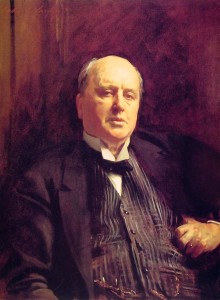
Henry James, portrait by John Singer Sargent
James is important, but not necessarily stylistically. You could try to go back from the baroque style of, say, David Foster Wallace to Henry James—they have a certain kind of syntactical complexity in common—but Jamesian prose has not been by any stretch of the imagination the dominant mode. However, James was an absolutely crucial figure in literary historical terms because of how he thought about the vocation of the novelist. He was not the first, but certainly the most prominent American writer who insisted that the novelist is an artist. As obvious as that seems to us now, it wasn’t in the late nineteenth century. So in terms of professional pride, James was an absolutely crucial figure. And one of the things that professional pride meant was a self-conscious, systematic assessment of technique. Asked to write the prefaces to his novels at the end of his career, he went back and reread them and produced this series of essays that raised the self-consciousness about technique to a new level. Even if his hyper-complex, increasingly abstract prose style hasn’t attracted too many followers, that legacy of paying close attention to questions of technique is central to the creative writing program. And he’s the writer from the past from who, if you put him in a time machine and brought him here, he would approve of what’s being done now in creative writing.
Really? You don’t think his class prejudices would come out?
OK, maybe. He would approve of there being two or three creative writing programs. And he might question the wisdom of putting one in Iowa. But he was somebody who liked the idea of author societies and group identification, and part of what goes along with his idea of professionalizing artists is a sense that that is how you earn your authority. You earn your authority through knowing your stuff, right? So a medical doctor is an authority because he’s been certified. Although novel writing will never be as professionalized as medicine—you’ll never need a license to practice fiction—it’s analogous. One earns authority through doing one’s homework and having the right level of self-conscious relation to one’s art. As opposed to a more loosey-goosey, doing-what-comes-naturally approach to writing, which in James’s view produced a lot of shoddy novels that were technically thoughtless.
You have a reputation as an inspiring and unconventional teacher, and your scholarly style itself is rather unconventional. You use the occasional curse word, and several times in your book you praise postwar literature’s “awesomeness.” Do you see it as part of your job to encourage your student’s creativity as scholars?
Yes, but I don’t necessarily think of it in terms of encouraging their creativity as much as encouraging enthusiasm. I want to communicate to them that it can be cool and fun to have interesting interpretations of things. That said, when I give paper prompts one of them is always to make up your own idea. I tell them that if ever a teacher was going to reward them for taking a chance doing something crazy, this is the class. The only ground rule is that it has to require an analogous amount of effort to writing a normal paper. Depressingly few students actually take me up on it, but that in itself is interesting. The assignment shows them how hard it is to be creative. So they hardly ever do it, but I like to issue the invitation, at least.
You talk a lot in the book about the “meta-genre” novel, and in your talk on Tuesday you said that a lot of the exciting work in contemporary literature was going on in that form. Does that indicate productive cross-pollination between the literary and non-literary, or is it just a way for program writers to demonstrate their superiority to genre fiction and genre fans?
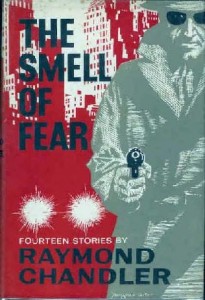
Should MFA programs branch out to include genre fiction writers?
Probably both. But I think the most important thing that the cross-pollination indicates is an authentic desire to reconnect with readers. The highbrow, technically difficult model for literary fiction has been around for many decades, and it’s obviously produced lots of interesting things, but it’s no wonder—given the state of the literary market—that writers would gravitate back toward giving the people what they want. I mean, it’s an amazing fact about creative writing programs that they’re so allergic to genre fiction. If you want a class in writing detective fiction, where do you find that in an MFA program? You don’t. You go to a commercial outfit. I understand the legacy of needing to distinguish the literary from the merely generic, but on the other hand, it’s kind of a shame. If I were the head of an MFA program, I’d see an opportunity here—to start self-consciously filtering genre into the program. I think that would be a really interesting way for a creative writing program to differentiate itself. You could be the one that both is interested in craft and the traditional high literary values, but also isn’t afraid to have writing workshops where it’s a given that people are going to be thinking about genre.
What fiction did you enjoy reading or rereading for this project? Was there anything you really had to slog through?
If I find something intellectually interesting, I tend to like it. That’s why I’m not trustworthy. That’s why, when in the book I declare the unparalleled greatness of postwar fiction, I kind of mean that, but take it from whence it comes. Anything that intrigues me, I enjoy.
Further Resources
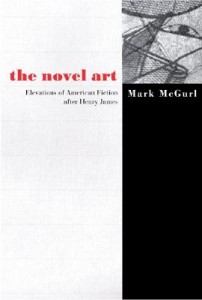 – In this podcast, critic Louis Menand discusses The Program Era and the teaching of creative writing.
– In this podcast, critic Louis Menand discusses The Program Era and the teaching of creative writing.
– Have you considered attending an MFA program? If so, don’t miss the recent comprehensive guide to creative writing programs from Poets and Writers, as well as a more quantitative ranking by Seth Abramson of the top fifty programs in the United States.
– If you’re shopping for one of McGurl’s books, order from your local independent bookstore.



